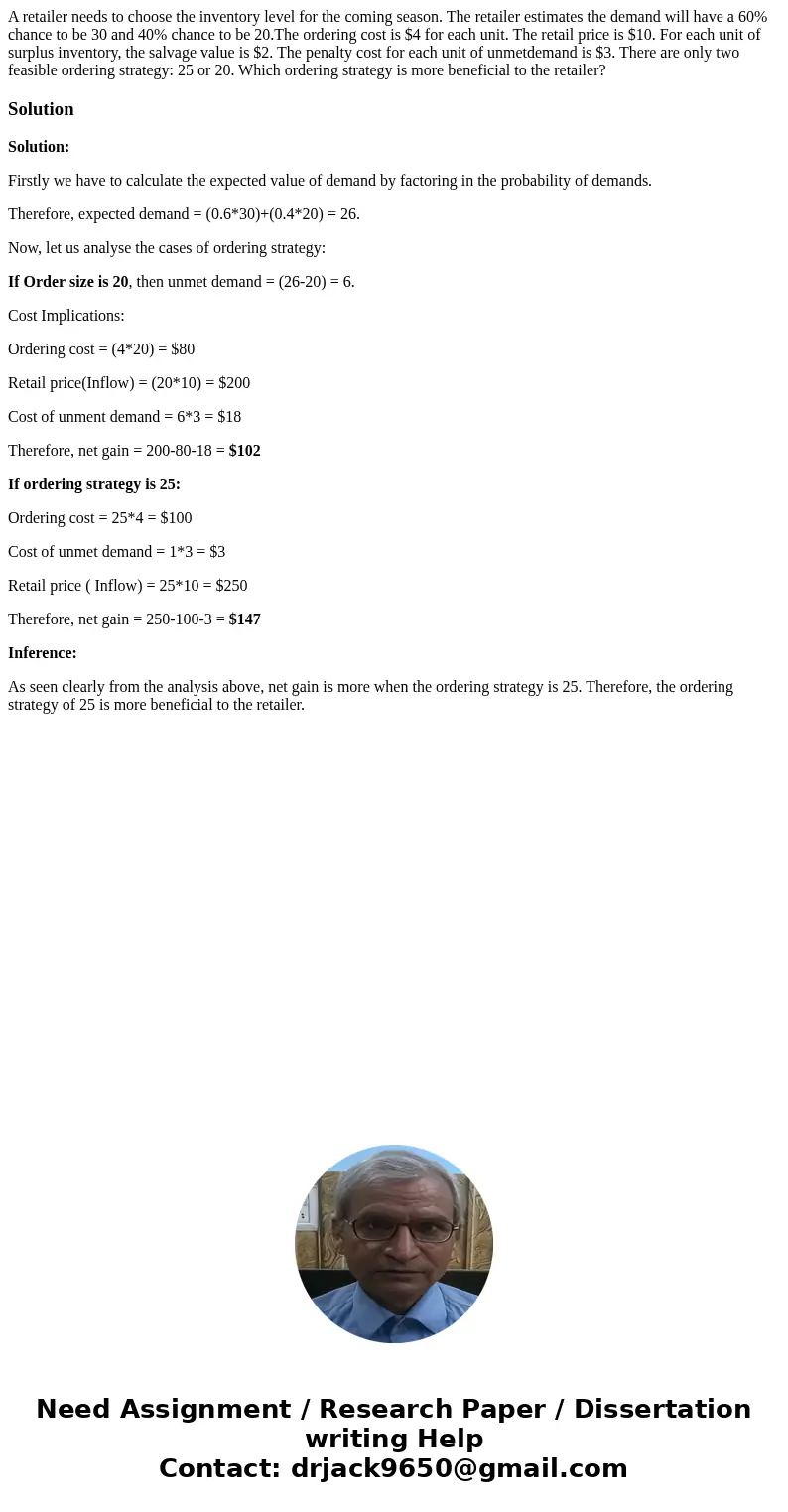A retailer needs to choose the inventory level for the comin
A retailer needs to choose the inventory level for the coming season. The retailer estimates the demand will have a 60% chance to be 30 and 40% chance to be 20.The ordering cost is $4 for each unit. The retail price is $10. For each unit of surplus inventory, the salvage value is $2. The penalty cost for each unit of unmetdemand is $3. There are only two feasible ordering strategy: 25 or 20. Which ordering strategy is more beneficial to the retailer?
Solution
Solution:
Firstly we have to calculate the expected value of demand by factoring in the probability of demands.
Therefore, expected demand = (0.6*30)+(0.4*20) = 26.
Now, let us analyse the cases of ordering strategy:
If Order size is 20, then unmet demand = (26-20) = 6.
Cost Implications:
Ordering cost = (4*20) = $80
Retail price(Inflow) = (20*10) = $200
Cost of unment demand = 6*3 = $18
Therefore, net gain = 200-80-18 = $102
If ordering strategy is 25:
Ordering cost = 25*4 = $100
Cost of unmet demand = 1*3 = $3
Retail price ( Inflow) = 25*10 = $250
Therefore, net gain = 250-100-3 = $147
Inference:
As seen clearly from the analysis above, net gain is more when the ordering strategy is 25. Therefore, the ordering strategy of 25 is more beneficial to the retailer.

 Homework Sourse
Homework Sourse